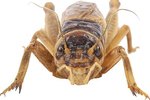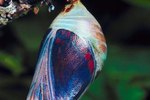
What most people know as lighting bugs are actually fireflies. Lighting bugs belong to the beetle family and can measure up to 1 inch in length. Famous for their light-on, light-off bellies, fireflies are special in more ways than one -- including their eating habits. Because they live all around the world, not all fireflies have the same diet.
Lighting Up for Food
Because there are about 2,000 species of lighting bugs, the colors they produce when they light up are not always the same. While you might associate fireflies with a greenish light, some produce a yellow or orangey-red color. One reason that's important: The light plays a big role in capturing prey, although not in every species. For example, the original purpose of the firefly light is to attract a mate, but the genus Photuris firefly uses her light to trick fireflies of a related species to come closer -- and then she hunts them and eats them.
Babies Are Avid Hunters
When the firefly is ready to reproduce, she lays eggs on the ground. Once the larvae hatch, they feed mainly on worms living in the surrounding area. To catch those worms, the firefly larva actually injects them with a numbing fluid -- so it can eat them alive. Firefly babies have also been known to catch and eat slugs.
Adults Have More Open Diets
Once fireflies reach the adult stage, their eating habits change. Although some adults of certain firefly species might still catch other bugs for dinner, most adults actually feed on nectar and pollen. According to National Geographic, some species do not seem to eat at all once they reach the adult stage -- which makes some sense once you learn that their entire life span is about 2 months.
The Ick Factor
The species of fireflies that feed on other bugs don't actually swallow or chew their prey. Instead, they inject a special poison that liquifies the animal. Then the firefly can suck the animal's internal organs directly, making digestion quick and easy.
References
Photo Credits
-
Brand X Pictures/Brand X Pictures/Getty Images
Writer Bio
Tammy Dray has been writing since 1996. She specializes in health, wellness and travel topics and has credits in various publications including Woman's Day, Marie Claire, Adirondack Life and Self. She is also a seasoned independent traveler and a certified personal trainer and nutrition consultant. Dray is pursuing a criminal justice degree at Penn Foster College.




